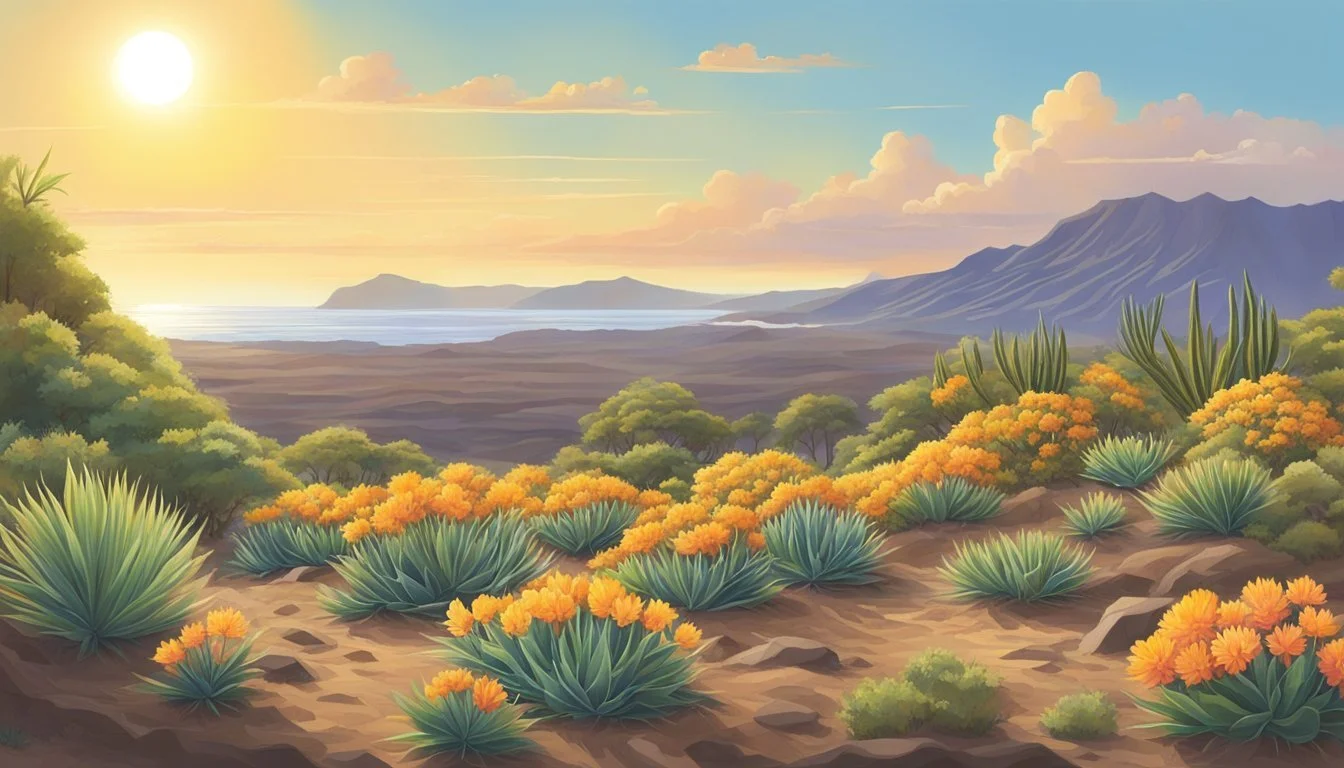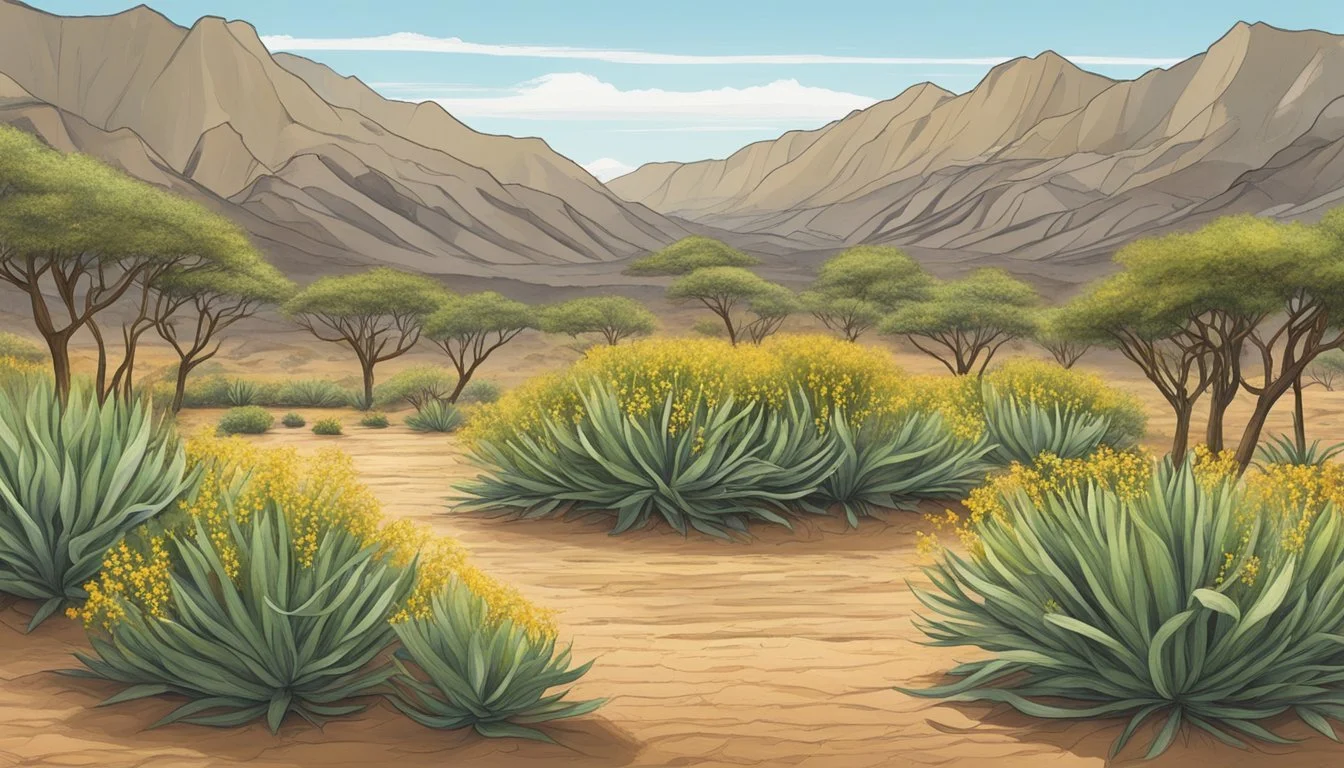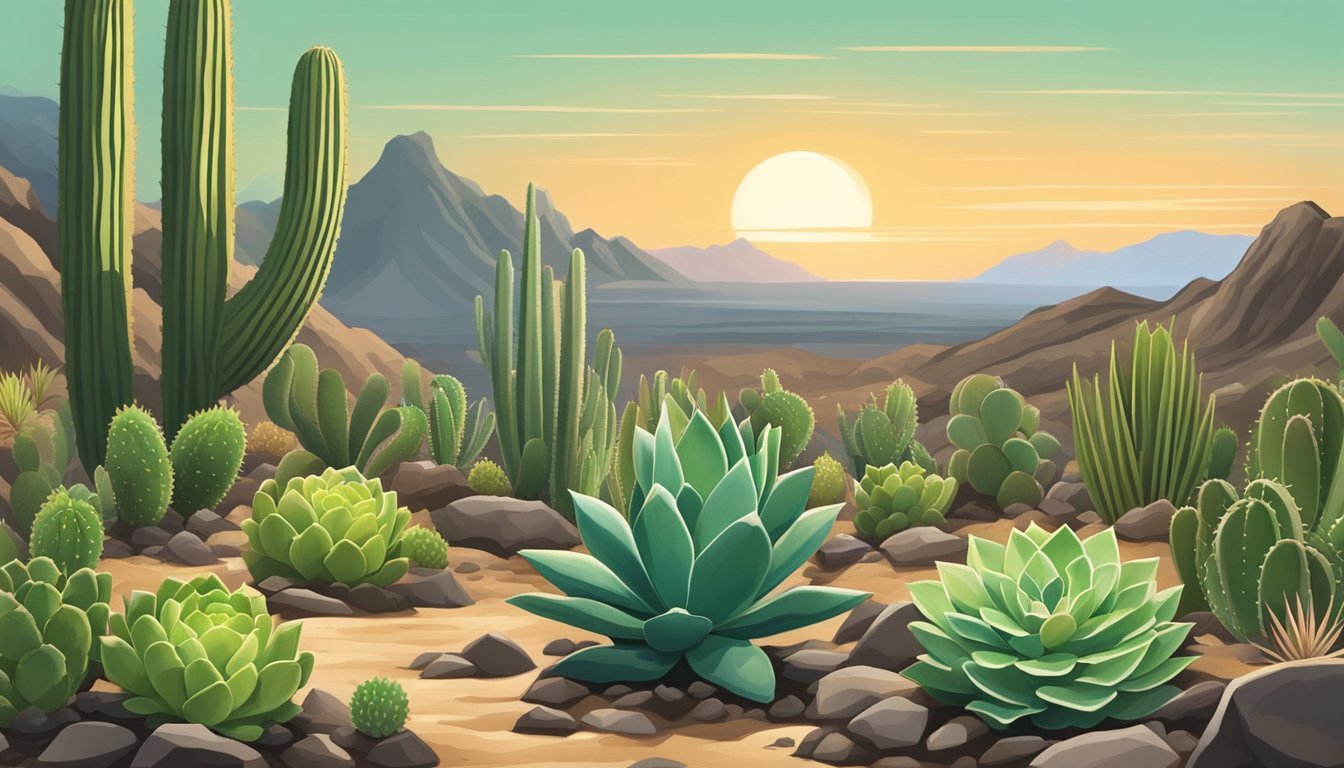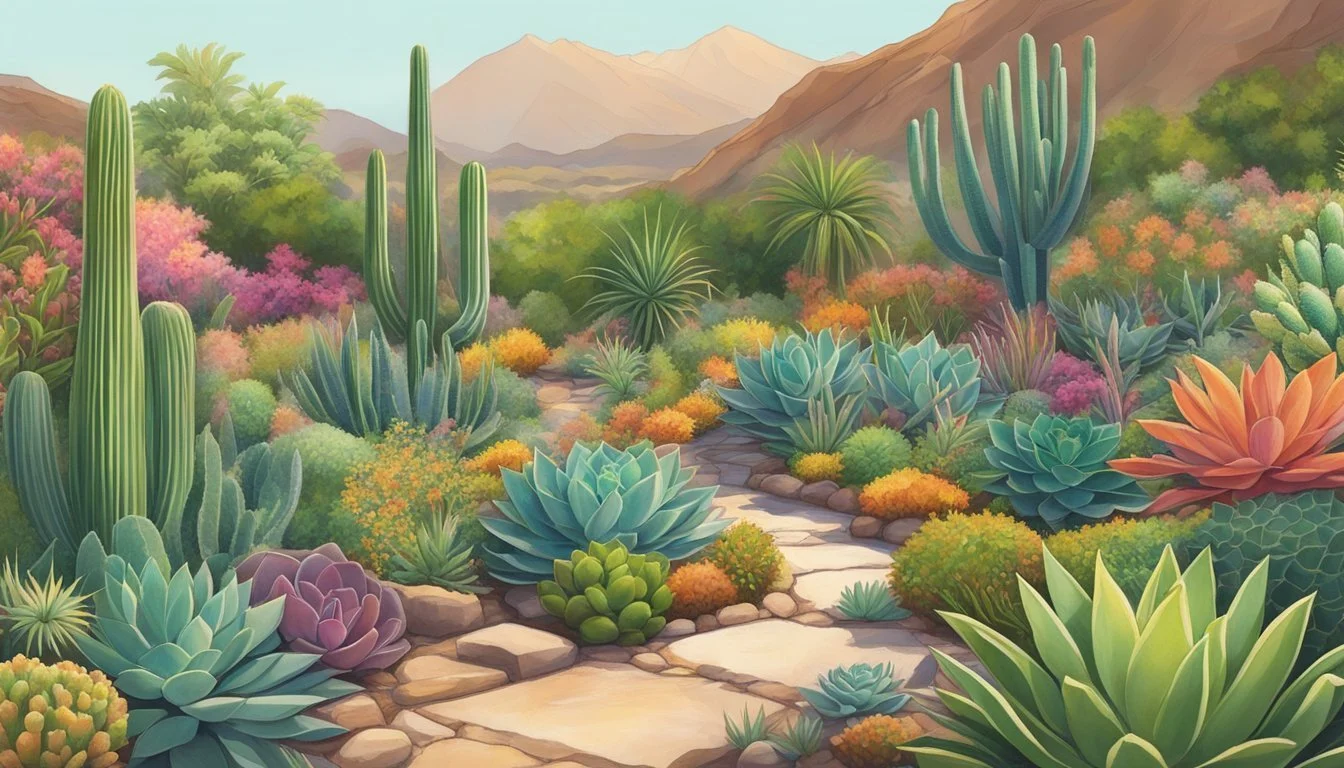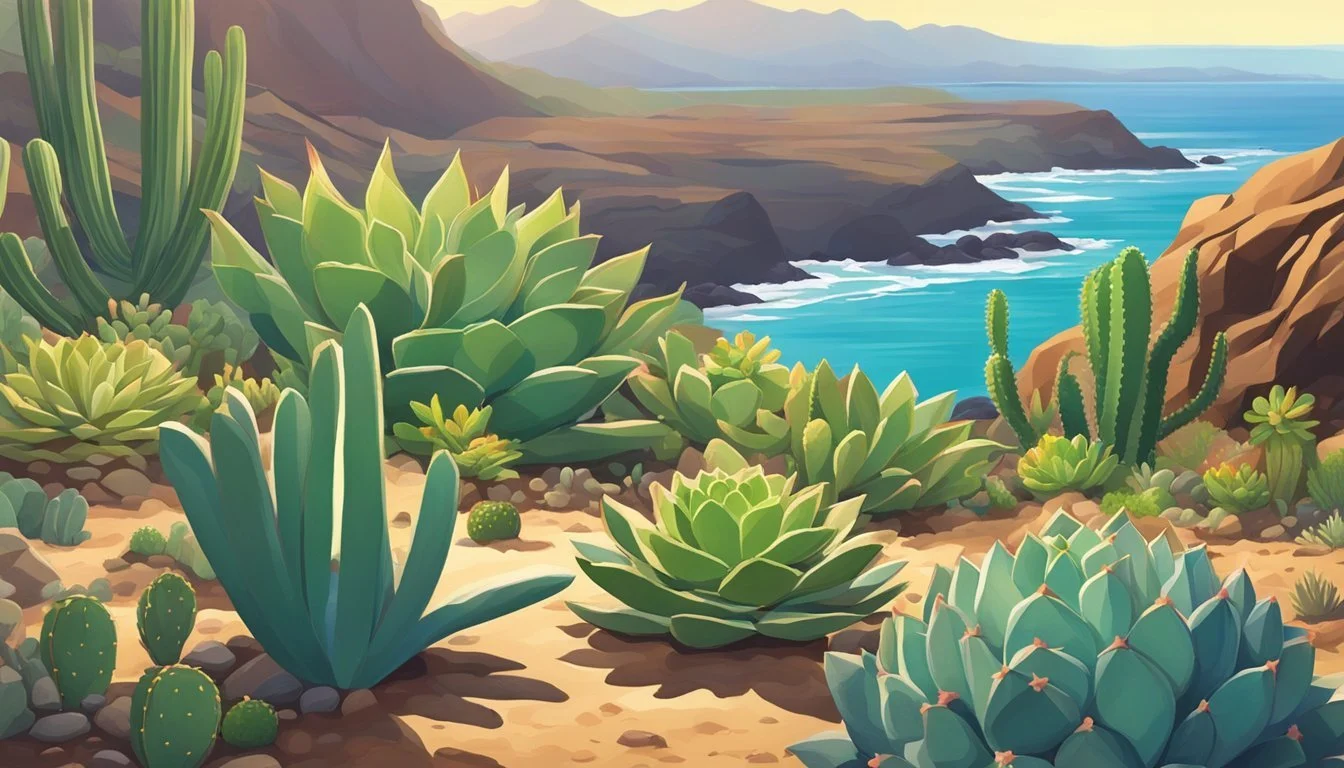Drought-Tolerant Plants in Hawaii
Essentials for Sustainable Landscaping
Hawaii's unique climate, characterized by varying levels of precipitation across its islands, presents challenges for gardening and agriculture. In parts of the islands where drought is common, selecting appropriate vegetation becomes crucial for land management and conservation. Drought-tolerant plants are essential in these environments, not only for their ability to thrive with minimal water but also for their contribution to the preservation of the local ecosystem.
Native Hawaiian plants have evolved to be particularly resilient in arid conditions, making them a smart choice for landscaping in drought-prone areas. These species are adapted to the local soil and climate conditions, which can lead to lower maintenance and water usage. Embracing these plants not only supports sustainability but also honors the regions' cultural heritage by preserving their native flora.
A variety of drought-tolerant Hawaiian plants are being utilized, each with specific benefits and applications in landscaping. Whether as ground cover or as part of a larger garden design, these plants offer lush greenery and vibrancy even in the toughest of conditions. Their ability to withstand strong winds, salty air, and sparse rainfall makes them ideal candidates for creating a beautiful, resilient garden in Hawaii’s diverse climates.
The Importance of Drought-Tolerant Plants in Hawaii
In the unique ecosystems of Hawaii, drought-tolerant plants play a crucial role. These species not only demonstrate resilience in the face of varying water availability but also support local wildlife, including native birds and endangered species. The incorporation of native Hawaiian plants adapted to dry conditions helps maintain native habitats amid changing environmental factors.
Particularly, the use of drought-tolerant plants in landscaping can reduce water consumption, an essential practice on the islands where water conservation is paramount. These plants, once established, often require less maintenance and fewer resources, which is both cost-effective and environmentally sound.
The health of indigenous species—and by extension, the entire ecosystem—is intertwined with the presence of native, drought-resistant flora. These plants provide essential cover and food sources for indigenous species, creating a foundation for sustaining Hawaii's diverse biological network.
As the pressures of urban development and the effects of climate change intensify, fostering landscapes that include native, drought-tolerant plants is a responsible way to preserve the natural heritage of the Hawaiian Islands. It ensures the stability of ecosystems that hundreds of native and endemic species rely on, including various birds and insects that are integral to pollination and seed dispersal processes.
The strategic use of these resilient plants can help avert the dire consequences of habitat loss for endangered species while honoring the intrinsic connection between Hawaii's people, their culture, and the land. Through the conscientious selection of drought-tolerant species, Hawaii can continue to model a balance between the needs of its population and the preservation of its unique and precious ecosystems.
Understanding Hawaii's Climate and Soil Conditions
The diverse climate and unique soil composition of Hawaii directly influence the type of vegetation that thrives across its islands. These factors are crucial when considering drought-tolerant plants for landscaping and conservation efforts.
Hawaii's Microclimates
Hawaii exhibits an extraordinary range of microclimates, each with distinct rainfall and temperature patterns. The islands can be categorized broadly into dryland forests, which receive minimal rainfall and are often exposed to intense full sun, and mesic forests, which experience moderate rainfall and humidity levels. These climatic conditions dictate the water availability in various regions, profoundly impacting plant life.
Soil Types and Their Impact
Soil across the Hawaiian Islands varies greatly but typically contain volcanic origins rich in minerals. The soil in Hawaii is often categorized by its developmental stage: from young, nutrient-poor, and rocky soils to older, deeper, and more developed soils with better water retention. Native Hawaiian plants have adapted to these diverse soil conditions, with some thriving in the arid, low-nutrient soils characteristic of parts of the islands. It's important to match plant choices with the appropriate soil type to ensure successful growth, especially in areas where water resources are scarce.
Native Hawaiian Plants and Their Ecological Roles
Native Hawaiian plants have evolved to fulfill vital ecological roles within their unique island habitats. They are crucial to ecosystem function, support wildlife, and offer resilience against environmental threats.
The Significance of Endemic Species
Endemic species are those native to Hawaii and found nowhere else in the world. They are integral to the ecological identity of Hawaii. With adaptations to local conditions, these species, like the ōhiʻa lehua (Metrosideros polymorpha), provide essential ecosystem services such as supporting soil fertility and moderating water cycles. The preservation of native Hawaiian plants is not just about maintaining biodiversity; it's about upholding an ecological structure developed over millions of years.
The Role in Habitat Conservation
Native plants are the backbone of habitat conservation efforts in Hawaii. They form the cornerstone of efforts to protect against invasive species, offering a natural defense as they are adapted to local pests and diseases. By using endemic species in reforestation and land rehabilitation, these plants help restore damaged ecosystems, maintaining the integrity and functionality of these habitats.
Interactions with Native Fauna
The relationship between native Hawaiian plants and the local fauna is deeply symbiotic. Birds like the Hawaiian honeycreepers have specialized beaks perfectly suited for the flowers of certain native plants, ensuring pollination. Similarly, many native insects are specifically adapted to feed on and pollinate these plants. By supporting native plants, conservation efforts also bolster the populations of dependent animal species, preserving intricate food webs and species interactions. These interactions are crucial for maintaining the health of Hawaii's ecosystems.
Traditional Uses and Cultural Significance
The traditional uses and cultural significance of native Hawaiian plants are deeply rooted in everyday life, from ornamental lei making to religious rituals, each plant carries a unique importance. Specifically, plants such as sandalwood, hala, kukui, kalo, and noni have played integral roles in Hawaiian culture for generations.
Plants in Lei Making
Lei making is a traditional Hawaiian art form that utilizes various native plants. Fragrant flowers like maile, a vine synonymous with Hawaiian culture, is often woven into leis for its distinctive aroma and beauty. Hala (Pandanus) leaves are also significant in lei making, treasured for their durability and the variety of artistic expressions they provide.
Native Plants in Hawaiian Rituals
Native Hawaiian flora is central to Hawaiian rituals. For instance, kukui (candlenut) is used not only for its oil but also as a symbol of enlightenment and protection in spiritual ceremonies. Sandalwood, prized for its rich scent, played a historical part in Hawaiian rituals due to its calming properties and was often traded or offered as gifts to the gods.
Historical Uses of Native Flora
The historical uses of native plants such as kalo (taro) underscore their significance. Kalo, a staple of Hawaiian diet and the primary ingredient in poi, holds a crucial place in Hawaiian creation stories. The noni plant, with Hawaiian names reflecting its various stages of growth, has been revered for its medicinal properties and was traditionally used to address numerous health issues.
Planting and Caring for Drought-Tolerant Species
In Hawaii’s unique climates, incorporating drought-tolerant plants into landscaping not only conserves water but also establishes a resilient garden. Key points in planting and caring for these species include using native plants well-adapted to the local environment, employing specific soil preparation and planting techniques, and understanding maintenance practices that encompass pruning and pest management.
Landscaping with Native Species
The success of a drought-tolerant garden lies in the choice of plants. Hawaiian natives, such as those suggested by the Department of Water Supply, are optimal for xeriscaping due to their adaptation to the region's conditions. When selecting species for landscaping, consider their mature sizes, landscape uses, and the aesthetics of their foliage and flower.
Common Native Drought-Tolerant Plants:
'Ōhi'a Lehua (Metrosideros polymorpha)
Pōhinahina (Vitex rotundifolia)
'Ākulikuli (Sesuvium portulacastrum)
Utilize mulch around these plants to reduce water loss, keep the roots cool, and minimize weed growth.
Soil Preparation and Planting Techniques
Soil preparation is crucial for drought-tolerant species as well-drained soil ensures that water reaches the plant roots without causing root rot. Amend the soil with organic matter to improve its structure and water-holding capacity. During planting, ensure proper spacing to give each plant enough room to grow without competing for resources.
Key Steps in Soil Preparation and Planting:
Test the soil pH and amend accordingly.
Work organic matter or compost into the soil.
Dig planting holes twice as wide as the root ball.
For irrigation, targeted drip systems are more water-efficient than overhead sprinklers, providing water directly to the plant's root zone.
Maintenance: Pruning and Pest Management
Ongoing garden care includes pruning to encourage healthy growth and shape plants. Pruning should be done carefully, maintaining the natural form of drought-tolerant species to avoid stress. Pests and diseases can still affect drought-resistant plants; however, a strategy combining monitoring and targeted treatment with organic or least-toxic pesticides is generally enough to manage them effectively. Regular checks for pest activity are vital to catch issues early.
Pruning and Pest Management Tips:
Prune during the dormant season to minimize stress on the plants.
Use organic mulch to suppress pests naturally.
Introduce beneficial insects for biological pest control.
Fertilizers should be used sparingly with native drought-tolerant plants since they are adapted to local soil conditions and usually require less feeding than non-native species. Opt for slow-release or organic fertilizers to minimize runoff and encourage healthy, steady growth.
Select Profiles of Drought-Tolerant Plants
The Hawaiian archipelago, recognized for its unique ecosystems, is home to a variety of native species well adapted to dry conditions. The following profiles focus on three native drought-tolerant plants, each distinctive in appearance and resilience, providing valuable insight into their natural ranges and tolerances.
Aalii (Dodonaea viscosa)
Native Range: Widespread throughout the Hawaiian Islands, most notably on Oahu. Tolerances: Thrives in full sun, tolerating a range of soil types, including coastal and volcanic soils.
The aalii is a tough shrub or small tree known for its hardiness and is a component of lowland dry forests. Its adaptability to dry conditions makes it highly suitable for xeriscaped gardening.
Naupaka (Scaevola spp.)
Native Range: Coastal areas across the Hawaiian Islands, especially the Naupaka kahakai variety found along shorelines. Tolerances: High salt spray and wind resistance; can endure nutrient-poor, sandy soils.
Naupaka species display half-flowers that together look like a full blossom. These resilient natives are particularly effective in stabilizing shoreline soils, preventing erosion while adding aesthetic value.
'Ohi'a Lehua (Metrosideros polymorpha)
Native Range: Across all the main Hawaiian Islands, occupying various habitats from wet rainforests to dry lava plains. Tolerances: Can withstand a range of environmental stressors, including volcanic activity.
The iconic 'Ohi'a Lehua, a key species in Hawaiian culture and ecology, showcases brilliant, tufted red flowers. It is one of Hawaii's most adaptable trees, capable of surviving in vastly different climates.
Conservation Efforts and Environmental Impact
Conservation efforts in Hawaii are pivotal for protecting its unique ecosystems, particularly in the face of environmental challenges such as droughts. Specific programs target the preservation of native flora and address the environmental impact of habitat degradation.
Preservation of Dryland Forests
The preservation of Hawaii's dryland forests is vital due to their role in maintaining local biodiversity. These ecosystems, once sprawling across the islands, are now significantly diminished. The Department of Water Supply underlines the importance of using native drought-tolerant plants, which supports conservation by reducing the need for irrigation and preserving precious freshwater resources. Efforts by the Department of Land and Natural Resources focus on mitigating the environmental impact of invasive species and human activity on these fragile habitats.
Habitat Restoration Initiatives
Restoration initiatives take shape through targeted reforestation and the reintroduction of native species. Projects like Lyon Arboretum's collaboration focus on saving endangered plants from the effects of climate change, showcasing a concerted effort towards bolstering native populations. Additionally, community-centric projects detailed by organizations like the Hawaii Forest Institute aim to restore urban forests, transforming city landscapes and combating environmental decline. These initiatives demonstrate a comprehensive approach to restoration and illustrate the alignment of environmental stewardship with cultural preservation.
Challenges and Solutions in Conservation
Hawaii's unique ecosystem is facing critical challenges from non-native species invasions and climate change impacts. Effective conservation strategies are key to preserving the islands' biodiversity and enhancing the resiliency of endangered and native plants.
Dealing with Non-Native Species
The Hawaiian Islands' isolation has given rise to a diverse array of native plant species, many of which are now endangered or extinct due to the introduction of invasive species. Invasive plants like the Miconia calvescens outcompete native flora, altering habitats and hindering regeneration of indigenous plants. Effective solutions include:
Regulation: Stringent laws to prevent the importation of potential invasive species.
Eradication and Control: Physical removal and the use of selective herbicides to manage outbreaks.
Public Education: Programs to inform the public about the importance of native plants and the dangers of invasive species.
Efforts like Hawai'i Strategy for Plant Conservation involve collective action aimed at controlling invasive species and rehabilitating native ecosystems.
Climate Change Adaptation
Climate change poses a significant threat to Hawaii's plant diversity, exacerbating drought conditions and increasing the risk of wildfires, which can give invasive species an advantage. To bolster resiliency, conservation efforts focus on:
Drought-Tolerant Planting: Using native, drought-tolerant plants like those detailed in the Department of Water Supply's guide can conserve water and reduce maintenance needs.
Predictive Modeling: Leveraging climate data to predict changes in habitat suitability and inform conservation planning.
Protective Legislation: Enacting policies that prioritize the conservation of water and critical habitats.
The integration of climate-resilient plants into landscaping, as discussed in the HawaiiScape article, is a practical approach to maintaining healthy ecosystems. Additionally, conservation projects like "Go Native: Growing a Native Hawaiian Urban Forest" emphasize the importance of restoring native plants in urban areas to support overall ecosystem health.
Conclusion
Drought-tolerant plants offer a sustainable solution for landscaping in Hawaii's unique climate. They exemplify resilience and adaptability amidst challenging environmental conditions. By turning to native Hawaiian species, homeowners and landscapers can conserve water while preserving the islands’ ecological heritage.
Native Hawaiian plants have evolved to thrive with minimal water, making them ideally suited for xeriscaping. This approach not only reduces irrigation demands but also supports local wildlife, providing habitats for endemic species. The use of such plants in urban settings contributes to sustainable development, mitigating the urban heat island effect and promoting soil conservation.
Embracing these plants today secures a greener future for Hawaii. By integrating these species into both public and private spaces, communities invest in a landscape that respects the local ecosystem. Drought-tolerant plants stand as a testament to the balance between human needs and environmental stewardship.
In summary, Hawaii’s commitment to these resilient species showcases a path forward that aligns with conservation and sustainability practices. These plants are not just a component of the landscape; they are a cornerstone of Hawaii's environmental future.
Frequently Asked Questions
This section addresses common queries about cultivating drought-tolerant plants in Hawaii's unique climate, providing guidance on plant selection for various landscaping needs.
What are some low-maintenance drought-tolerant plants suitable for Hawaii's climate?
Low-maintenance drought-tolerant plants suitable for Hawaii’s climate include species like the 'iliahi (Sandalwood) and the Ki (Ti plant). These plants require minimal water once established and are well-adapted to the local conditions.
Which native Hawaiian plants are best for drought-tolerant landscaping?
Native Hawaiian plants such as 'Ōhi'a Lehua (Metrosideros polymorpha) and Pōhinahina (Vitex rotundifolia) are excellent for drought-tolerant landscaping. They are accustomed to the island's environment and offer sustainability benefits.
Which drought-tolerant flowering bushes thrive in Hawaii?
Flowering bushes like the Hibiscus brackenridgei, the state flower of Hawaii, and the Naʻu or Hawaiian Gardenia, are known for their drought tolerance and ability to thrive in Hawaii's varying climates.
Can you list drought-tolerant Hawaiian plants for container gardening?
For container gardening, drought-tolerant Hawaiian plants like the Akulikuli (Sesuvium portulacastrum) and the Beach Naupaka (Scaevola taccada) are great choices. They can withstand drier conditions and are ideal for small-scale gardening.
What ground cover options are both drought-resistant and suitable for Hawaiian gardens?
As ground cover, plants like the 'Ae'ae (Bacopa monnieri) and the Dwarf Naupaka (Scaevola coriacea) are drought-resistant and suitable for Hawaiian gardens. They provide excellent coverage while conserving water.
What evergreen plants can endure dry conditions in Hawaii?
Evergreen plants that endure dry conditions in Hawaii include the Kōnāhuanui (Sporobolus virginicus) and the Wiliwili (Erythrina sandwicensis). These plants stay green year-round, even in less-watered landscapes.


